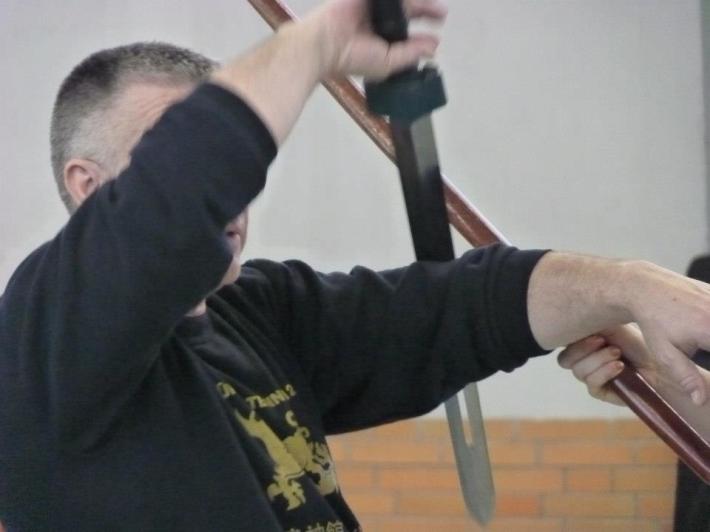From Shiro Kuma's Weblog by kumafr
The Ken is heavy and needs a lot of circular momentum to cut into the opponent.
To apply an “omote shutô-like” cut to the side of the neck and to be sure to slide the blade in between the helmet and the yoroi (shoulder level) you must use your taijutsu and the kosshi of the Gyokko ryû.
3 Key points:
- the sword is in line with the body above the head.
- the wrist is reverse and broken
- the blade is as flat as possible
Start from an Ichimonji like kamae with the blade lying flat on the arm. From the kamae lift the sword above the head and support it with your extended fingers. Then “lasso” the blade still as flat as as possible above the head with a full body movement using the tenchi (body axis) as a pivoting point. The pivoting action to throw the body is done at the left toe (forward leg). The body weight is transferred gradually from the back leg to the front one (hips still leveled), this slides the body axis forward inducing an acceleration of the blade.
The speed of rotation of the blade added to the body movements creates a devastating power to cut/crush the opponent.


